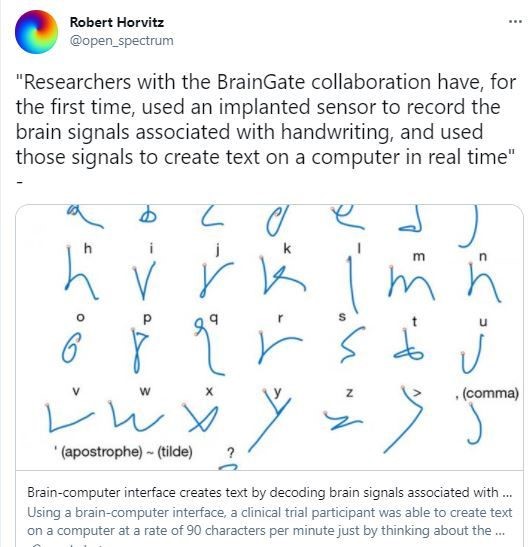Decoding brain signals associated with handwriting
The breakthrough system, developed by US researchers, uses a computer to decode attempted handwriting movements from signals in the brain. For this latest study, the team wanted to find out if asking a participant to think about motions involved in writing letters and words by hand would be faster.
However, that had a different approach that involved pointing to and clicking a letter on a virtual keyboard, according to a report by Independent. This was done by the participant merely thinking about the hand motions involved in creating written letters.
Recognition
The new study is part of the BrainGate clinical trial, directed by Dr. Leigh Hochberg. Hochberg is a critical care neurologist and a professor at Brown University’s School of Engineering affiliated with the University’s Carney Institute for Brain Science.
Frank Willett, a research scientist at Stanford University and the Howard Hughes Medical Institute (HHMI), led the study, which was supervised by Krishna Shenoy, a Stanford professor and HHMI investigator, and Dr. Jaimie Henderson, a professor of neurosurgery at Stanford.

Working
- The system is so fast because each letter elicits a highly distinctive activity pattern, making it relatively easy for the algorithm to distinguish one from another, Willett says.
- A new brain-computer interface (BCI) can turn ‘mental handwriting’ – the act of imagining yourself wiring on a piece of paper – into text on a screen in real-time.
- The new tech may have broken the previous record of thought-to-text translation that was 40 characters per minute.
- Using a brain-computer interface, a clinical trial participant was able to create text on a computer at a rate of 90 characters per minute just by thinking about the movements involved in writing by hand.
Conclusion
The research team is hopeful that such a system could one day help to restore people’s ability to communicate following paralysis caused by injury or illness. The trial participant, a 65-year-old (at the time of the study) man, was paralyzed from the neck down by a spinal cord injury.






